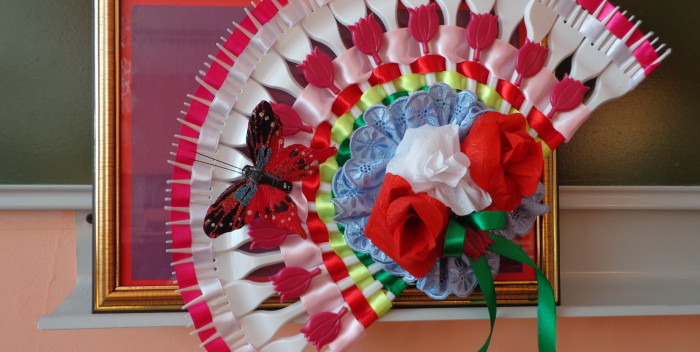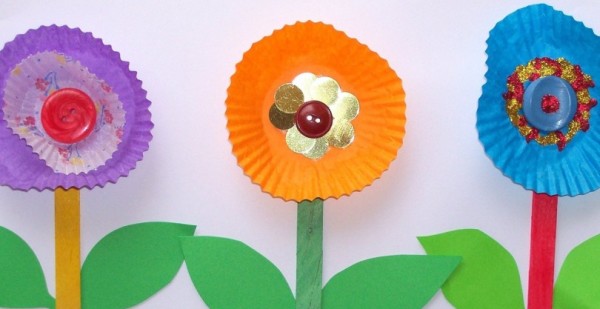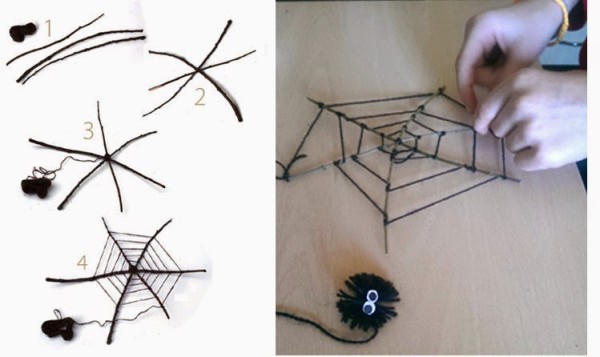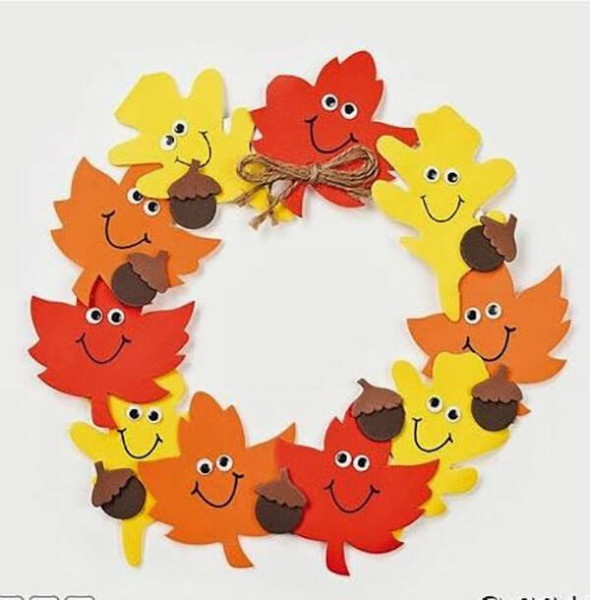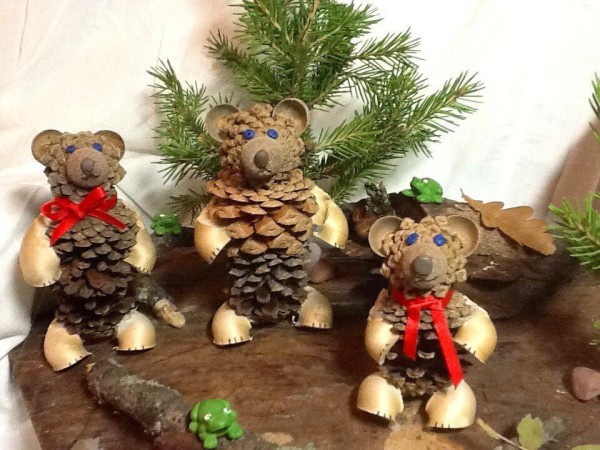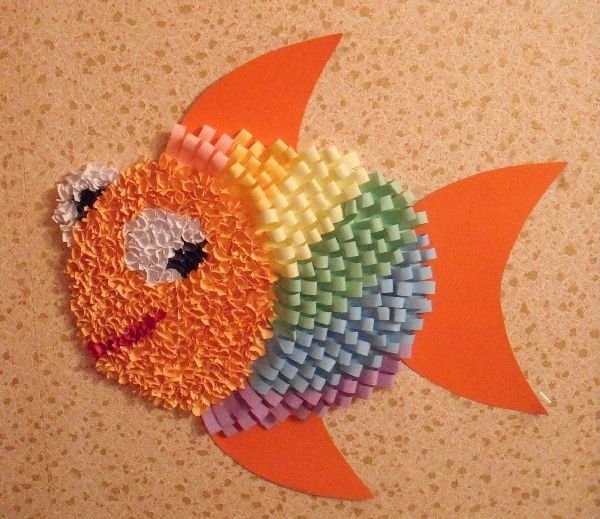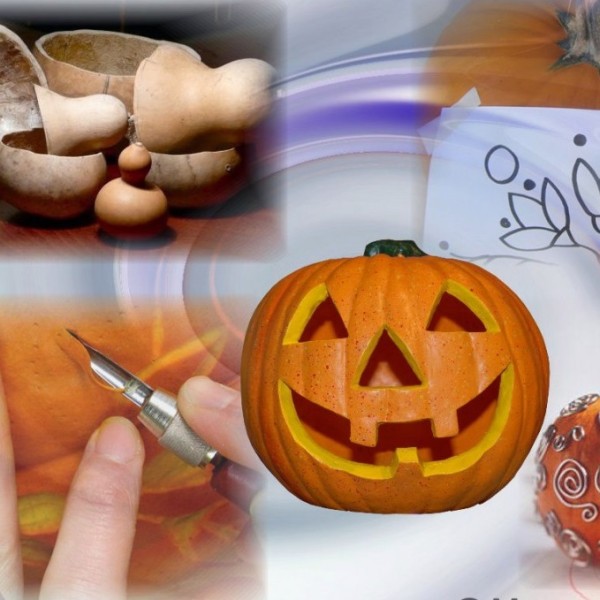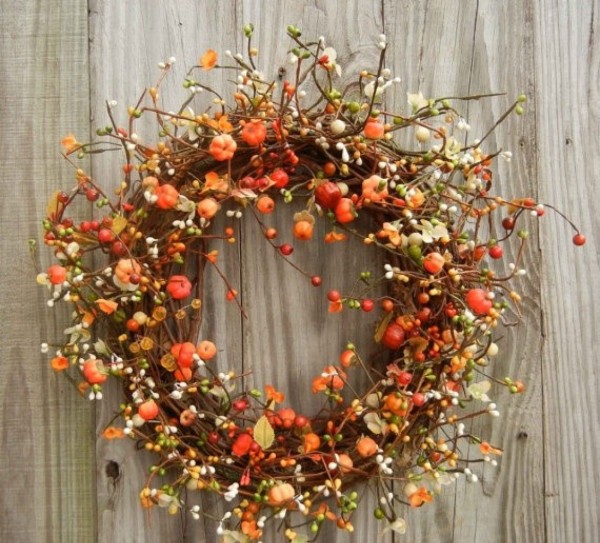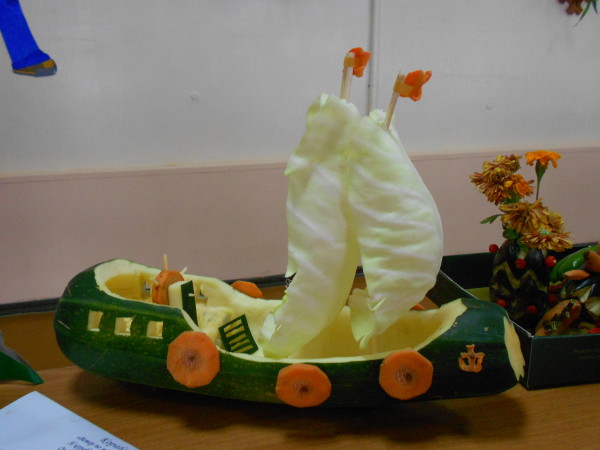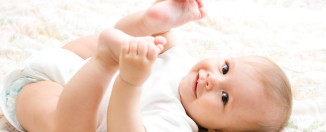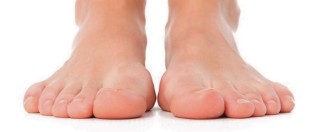Original crafts to school
Original crafts for school create an opportunity to captivate children with independent creativity. Of course, at the initial stage, the help of adults (parents or teachers) is needed, but then, this can give a real impetus to this kind of occupation. Making crafts is useful for obtaining certain labor skills, and with the correct organization of work, it creates the preconditions for aesthetic education. If they are of practical value, then the child will also feel the usefulness of his work.
Content
Crafts for elementary school
It is especially important to form creativity and imagination in children of primary school age (7-10 years old), when the child can be carried away by an interesting thing, praise of the results of labor, the competitive principle. The manufacture of various crafts can be carried out at home with the participation of parents, in labor lessons under the guidance of a teacher or in circles with the help of specialists. It is not the place where they are made that is important, but the child's interest.
An adult should offer the idea of a craft for a primary school student, and it is better when the advice is unobtrusive, and the child thinks that he himself has thought of such an option. Of course, the work should be carried out exclusively voluntarily, but interest in it should be aroused. In this direction, such paths can be distinguished - getting a good mark; participation in the exhibition; utility; use as a gift; surprise at their originality. It is best when the work itself gives the child pleasure, and the result of the work is approved by peers and teachers.
A special role is played by the material for the craft. It is difficult to call a thing assembled from ready-made elements a craft. This will already be the "constructor". Natural materials, improvised means, waste of "parental hobbies" (carpentry, sewing, knitting, etc.), easy-to-process materials (wood, paper, cardboard, plastic, plasticine), unnecessary household " trash "and old rags, containers, etc. Natural ornamental raw materials are especially valued in handicrafts. You can use twigs and driftwood, straw, cones, leaves and needles, flowers, plant fruits (acorns, nuts, fruit pits), vegetables and fruits.
The child is interested in doing any thing that is most relevant at this particular time. The most common direction is to coincide with a holiday or some important event. Look especially attractive - New Year, March 8, Christmas, Shrovetide, Easter, Victory Day, Cosmonautics Day, Teacher's Day. Seasonality should also be taken into account. For this, spring, summer, autumn and winter crafts are distinguished, which have their own specifics.
What requirements should be considered when choosing crafts for elementary school? First of all, they must be easy to manufacture. All basic operations should be carried out by a child who does not have skills in work. We must rely on simple and standard tools - scissors, jigsaw, pliers, screwdriver, burning device, hacksaw, file. Even a sharp knife must be used in a controlled and limited manner. Safety is the most important element of the organization of work. The craft itself should be bright, strong enough, without the use of harmful materials.
Crafts to school from natural material
Nature makes it possible to maximize the imagination and talent of the child. A variety of crafts can be made from natural raw materials, which can be found in the garden, forest, on the banks of water bodies, in the field. The best time to collect material is autumn. With such a variety of shapes and an impressive palette that nature gives, it is very difficult to find in a store. She can also suggest an original idea for a craft. Fallen leaves can be used as an ornamental material; pine, spruce, cedar cones; needles; ash and maple seeds; nuts (walnuts and hazelnuts); watermelon, pumpkin, melon seeds; sunflower seeds; acorns; original stones. Trees can give a variety of elements - branches, roots, bark, fruits. It is worth taking a closer look at moss, reeds, dried flowers, shells. It is very difficult to list everything. You just have to walk through the park or forest, using your imagination.
There are several ideas for primary school students:
- Spider web. Such a craft is made in the following order. First, two branches are held together with a strong thread in the center to form a cross. Then thin branches are fixed in the radial direction, and between them a white thread is pulled, forming cobweb cells. A spider can be made by cutting the chestnut fruit in half and securing small twigs with a break to form the insect's legs. In the center of the web, a small piece of paper is attached, and a "spider" is glued to it.
- Dragonfly. This craft is more suitable for girls. For one dragonfly, you will need a small twig 4-5 cm long, any round fruit with a diameter of 8-12 mm and 4 maple lionfish, as well as sparkles. 2 lionfish are glued to the branch from different sides, and a round head is fixed at the end. "Wings" are thickly coated with glue and sprinkled with glitter.
- Three-dimensional picture. If in the summer you managed to visit the seashore and collect the shells of the rapana, then you can put together a very beautiful picture. The base can be thick cardboard. Shells of different sizes are attached to it with the help of glue and wires. For example, a sailboat looks impressive. Its layout begins with a fairly large shell that forms the body. It is usually fixed using plasticine. Masts can be "built" from sticks, and sails can be formed from shells, decreasing their size as they are laid up. The sea can simply be painted with gouache, but an uneven surface that imitates waves looks more original. For this, tinted semolina, a thick layer of glue are used.
- Figures on sticks. Whole compositions can be created on strong rods. At the ends, beetles, spiders, butterflies look original. Small fruits of plants of various shapes are suitable for their manufacture, for example, thorny seeds of burdock, string, buttercup. From dried poppy boxes, snapdragons, physalis, nigella, beautiful flower bouquets are obtained. They are fixed along the length of the twig, and between them you can place lime, maple or ash lionfish, small leaves or oblong leaves of reeds, sedges.
- Figures from snags and branches. Among such raw materials, looking closely, you can find bizarre shapes that resemble various animals and even people. As a rule, you need to work with them a little with a knife, bringing them to a complete imitation. If the finished figurine is varnished, then it will last for a long time and will look noble.
Crafts from leaves to school
The bright colors of autumn leaves make the imagination turn on, and I want to do something while preserving this beauty. For crafts to school, you can offer the following options:
- Bouquet of roses. Flowers are made from fresh leaves when they can be bent with ease. Maple leaves work best. Each flower will require 7-10 leaves, depending on the planned size. First, the heart of the rose is formed. The sharp ends of the leaf are bent inward, and then, it is twisted along the axis of the cutting. The formed bud should be fastened with a thread to simplify further operations. Other leaves are wrapped over the core, and sharp ends are also bent on them. After reaching the required flower size, the folded leaves in the lower part are fastened with a thread or narrow tape. A composition or bouquet is created from such flowers. In the first case, roses are attached to a base, which can be decorated with expanded leaves. To obtain a bouquet, each flower is fixed on twigs (twigs), preferably green. It is worth fixing small green leaves on them. Several roses are collected in a bouquet. In this way, you can make roses of different colors - from yellow-green to dark brown. The most impressive are the bright yellow, red, orange colors.
- Leaves wreath. A plastic plate is used as a base, in which the middle is cut, i.e. a ring is being prepared for attaching the leaves. A wire and a stapler are used for secure fastening. Leaves are selected in different colors, sizes and from different types of trees and shrubs. The first layer is formed from the largest elements, and they partially extend beyond the border of the base and are fixed with a stapler. Then, another 2-3 layers are laid with a gradual decrease in size. A certain decor is provided by a narrow ribbon that imitates the binding of a wreath, i.e. located spirally.
- Applications. The most common version of leaf crafts is appliqués. Choosing a color scheme, you can make a rather complex drawing. Various animals (including fabulous ones) are especially popular - fish, birds (especially parrots), hedgehog, butterflies, peacock, rooster, turtle and many other animals. Still lifes with fruits, flowers, as well as magnificent landscapes are often created.
- Frame for photo or painting. It is made similarly to a decorative wreath, but the basis is thick cardboard, which is cut in the shape of a rectangle or oval.
- The simplest craft is a bouquet of leaves. When compiling it, it is important to select leaves with long and strong cuttings. The color combination and sizes are determined by the "master" himself. Green leaves go well in such bouquets, especially narrow, long "swords".
Crafts from cones to school
Spruce and pine cones, as an ornamental material, deserve special attention. They are used to make original trinkets, which are not ashamed to be brought to school and presented at the exhibition. The list of such crafts is huge. Only a few of them can be distinguished:
- Squirrel. A composition like "Squirrel on a Pine" can be considered a school exhibit. The animal is collected from 3 cones of different sizes. The largest open cone of the Christmas tree is a ready-made squirrel tail. You should pick it up with a slight bend. The base of the “tail” is pierced and a slightly smaller bump is attached to it. This is the torso. The squirrel head is made from a small pine or larch cone (you can use a large acorn instead of a cone for the head). The elements are fastened to each other with pointed branches. If you want to strengthen the figure, the joints are glued. Feet can be formed from twigs, wire, or thick felt. The squirrel's eyes should be expressive, and therefore small shiny plant fruits (for example, peony seeds or cherry pits) should be used. A large pine branch with a branching knot can serve as the basis for the composition. A pine branch with needles should be strengthened on it. The squirrel is fixed on the knot. As an additional decoration, you can use small cones, colorful leaves. Cotton wool can imitate snow.
- Turtle. It is made from a large pine cone, preferably fully open. An acorn is used for the head. A slightly rounded base is formed at the bottom by cutting off the protruding elements. Legs can mimic maple lionfish.
- Fish. A dense rounded bump is selected for her. Eyes are made from beads, beads, small acorn caps. Bird feathers work well for the fins and tail. They should first be painted in the desired color. The golden hue is very attractive.
Paper crafts for school
Paper and cardboard are the most common craft materials. From them, you can form flat and three-dimensional figures with simple movements, while the elements from them are easily connected with glue or a stapler. You can use multi-colored materials or paint in any color with paints or gouache.
When making paper crafts, different technologies can be used:
- The most common applications are postcards. The task is very simple. The necessary figures are cut out of colored paper and glued to the cardboard base. Bulky postcards are made using corrugated paper or by inserting filler (for example, cotton wool). Some elements of the drawing are applied with a brush directly to the base, and then the prepared elements are glued. Small details (eyes, mouth, etc.) are also applied with a brush.
- Volumetric figures and objects. A very popular example is caskets. They are glued from cardboard and then decorated. For these purposes, beads, beads, braid, natural materials can be used. The volume in the figures can be formed by various fillers - foam rubber, cotton wool, polystyrene, etc.
- Facing technique. Bulk gizmos can be created from paper or thin cardboard using a special method. An example is the making of a rose. In this case, a sheet of thick colored paper is taken, and colored on both sides (different colors are possible). For a flower, red, pink, yellow, orange tones are most suitable. A spiral is marked on a sheet of paper, along which cutting takes place. The result should be an uneven spiral tape. It is twisted starting from the end. After receiving the flower, the free end is fixed with glue. These roses are then attached to the cardboard base in the intended composition.
- Scrapbooking... With the help of this technique, thematic photo albums are made out. For this, woven patches, velvety paper, bows, ribbons, foil are successfully used. A variation of this technology is embossing, when convex images are formed. Another technology is distressing, based on artificial aging of the album.
Craft pumpkin to school
Pumpkin with its size and shape allows you to talk about yourself as a raw material for crafts. It is easy to handle with a knife, and the skin lends itself to staining. The main thing is to carefully remove the soft insides to exclude the decay process. You can offer such ideas for making pumpkin crafts:
- Mask. For primary school students, the most interesting is the manufacture of a scary or funny face from a pumpkin. It's easy enough to make them. After all the pulp has been cured with a spoon, the shell is cut with a knife to form the eyes, nose, and mouth. Such a muzzle can be given a different character - from a very kind cutie to an evil monster. In the latter case, the effect is enhanced by internal illumination using a flashlight.
- Vase. For older students, you can offer a more elegant option - a flower vase. At the top of the pumpkin, a "cap" is cut off and a depression is made. It contains a glass or plastic container that can be filled with water. The pumpkin itself can be simply varnished or painted.
- Ball with sparkles. The pumpkin can be used as a purely decorative element. For example, when decorating a class for the New Year, you can make a pumpkin ball with sparkles. To do this, the pumpkin is completely painted white with acrylic paints (you can give another delicate shade). On the surface of the vegetable, glue is applied to certain areas where the glitter is fixed. They can be in the form of a rhombus, circle, star, etc.
- Various figures. Small pumpkins can also be used for crafts. By connecting them together, you can imitate various animals. On New Year's Eve, white-painted pumpkins can be a good material for making "snow women".
Autumn crafts to school
It just so coincides that the autumn season, rich in various ornamental materials, falls at the beginning of the school year, when the guys meet together after the summer holidays. How you want to surprise your peers at this time. Autumn opens up great opportunities for creativity. At this time, the above-described leaf products are successful. Various fruits can be applied.
The composition "Golden Autumn" can leave a good memory of this period. You can suggest the idea of creating an applique with a tree in autumn decoration. It is manufactured as follows. A tree trunk is drawn on a sheet of cardboard with dark paint. Further, small leaves of plants or fragments from large leaves are glued to it. They are attached from one edge to ensure that the other edge of the leaf can be lifted. This creates a three-dimensional effect.
Crafts from vegetables for an exhibition at school
You can make original crafts from vegetables and fruits, which may well claim to be victorious at school exhibitions. You can use the following vegetable crops:
- Eggplant. The dark color of the peel and the light tone when peeled off make it possible to imitate different animals, combining these effects. Penguins and dolphins are especially popular. Combined with Chinese cabbage, you can make a cute duck. A large eggplant vase looks good.
- Zucchini. From this vegetable, you can create such figures - penguins, sharks (from zucchini), shoes.
- Cucumbers. The green color of the vegetable immediately adjusts to create the image of Gena the crocodile. Fabulous shoes look very nice.
- Cauliflower. A white shaggy hat, when combined with other vegetables, allows you to make different figures - Dolly the sheep, a swan, ice cream and much more.
- Radish. From this small vegetable, mice, fly agaric mushrooms, flowers are beautifully obtained.
- Carrot. Its vibrant color is perfect for creating flowers. It goes well with other vegetables.
DIY crafts on the theme "School"
Of course, for the students, the theme "School" is close in spirit and includes many concepts. Particularly noteworthy are such sections as "My school", "My class", "What is needed in school", "School of the future", etc. Most often, such crafts are based on applications, albums, clay or plasticine products, paper and cardboard.
A photo album, especially made using the scrapbooking technology, leaves a memory for many years. What is the effect of this approach? The technique implies non-standard design of the cover and each sheet of the album. The cover is made out magnificently, brightly. Volumetric images, embossing are welcome here. Each inner sheet usually contains only one photograph. But to it there may be original and capacious comments, caricatures. It is important that the decorative elements match the theme. It is this approach that provides a huge interest in the craft many years later, when the surging memories embrace a long-matured person.
